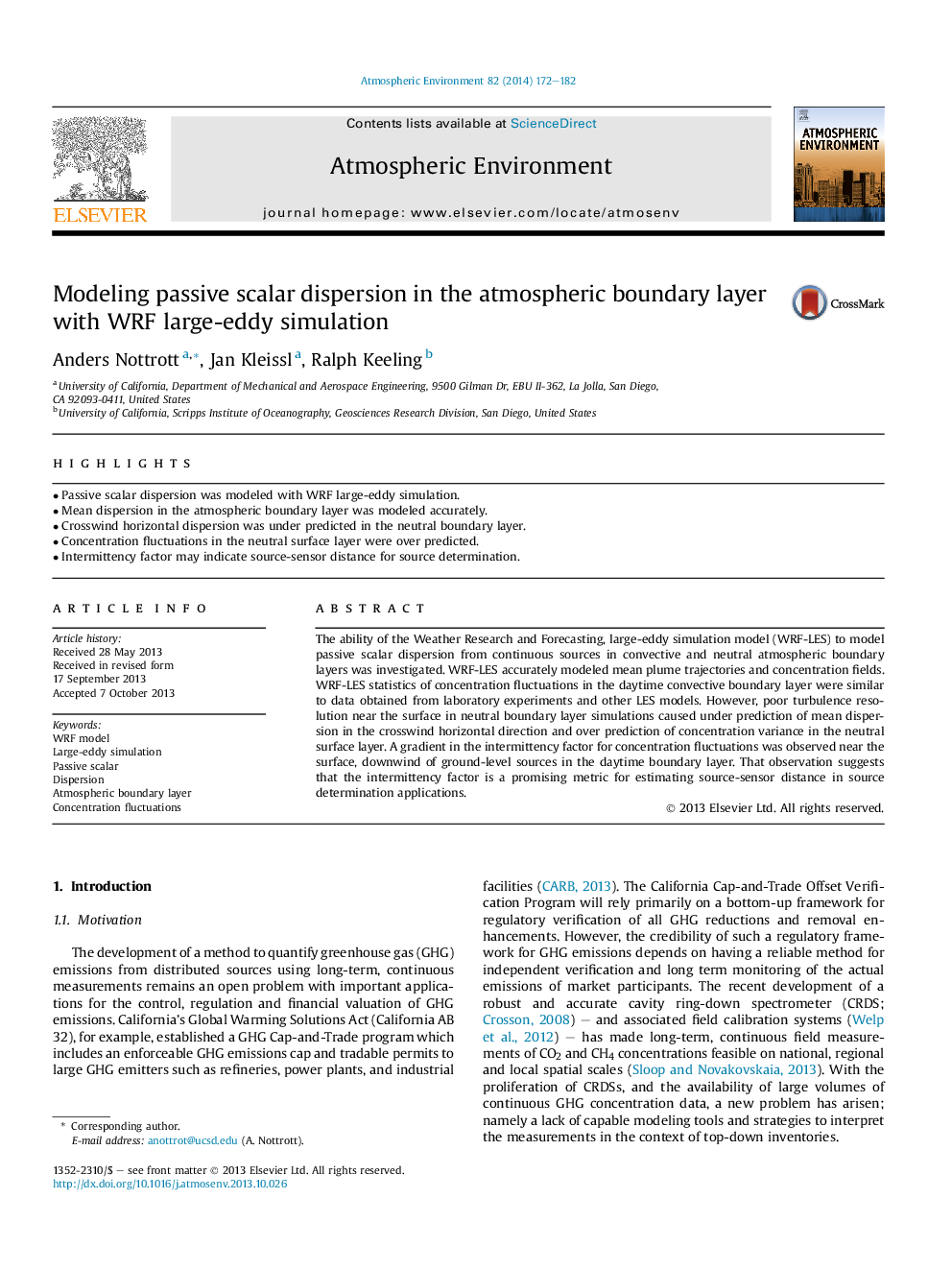| Article ID | Journal | Published Year | Pages | File Type |
|---|---|---|---|---|
| 6340050 | Atmospheric Environment | 2014 | 11 Pages |
â¢Passive scalar dispersion was modeled with WRF large-eddy simulation.â¢Mean dispersion in the atmospheric boundary layer was modeled accurately.â¢Crosswind horizontal dispersion was under predicted in the neutral boundary layer.â¢Concentration fluctuations in the neutral surface layer were over predicted.â¢Intermittency factor may indicate source-sensor distance for source determination.
The ability of the Weather Research and Forecasting, large-eddy simulation model (WRF-LES) to model passive scalar dispersion from continuous sources in convective and neutral atmospheric boundary layers was investigated. WRF-LES accurately modeled mean plume trajectories and concentration fields. WRF-LES statistics of concentration fluctuations in the daytime convective boundary layer were similar to data obtained from laboratory experiments and other LES models. However, poor turbulence resolution near the surface in neutral boundary layer simulations caused under prediction of mean dispersion in the crosswind horizontal direction and over prediction of concentration variance in the neutral surface layer. A gradient in the intermittency factor for concentration fluctuations was observed near the surface, downwind of ground-level sources in the daytime boundary layer. That observation suggests that the intermittency factor is a promising metric for estimating source-sensor distance in source determination applications.
